Hybrid Vehicles —— and the Future of Personal Transportation
----- 混合动力汽车
Historical Roots of Hybrid Automobiles Ancient History: Crossroads Steam Cars Electric Cars Gasoline Cars Carriages Crossroads Invention of Hybrid Automobile Key Features of Hybrid Automobile Early Hybrid Vehicles Woods Gas-Electric Car Control Systems for Early Hybrids Modern Period of Hybrid History Hybrid Automobiles: Stirring of Interest in the 1990s Partnership for a New Generation of Vehicles Crossroads 2008: Sneak Preview of the Future References Additional References Why the Crisis? Hybrid Vehicles as a Mitigation Measure Introduction A Story Setting the Stage Depletion of Petroleum Estimating Oil Production Oil Reserves and Resources Demand for Petroleum Oil in the United States Hubbert's Peaking Theory Near-Term Situation Summary References Overview of Hybrid Vehicles Introduction Concept Hybrids and Electric Vehicles Concept Hybrids on Two (or Three) Wheels Park the Car Description of a Few Select Hybrids Hybrid Truck and Bus Technology Concept and Production Hybrid Trucks Hydrogen Electric Racing Federation Production Hybrid Buses Military Applications of Hybrids Parting Perspective Summary Appendix References Hybrid Automobile: What Is It? Hybrid Definition A New Idea for a Hybrid Hybrid Electric Vehicle Inherently More Expensive Hybrids: Mainstream or on the Fringe? Success or Failure? HEV Propulsion Design Options HEV Propulsion Design Options: Series Discussion of Various Operating Modes: Series HEV Propulsion Design Options: Parallel Discussion of Various Operating Modes: Parallel Comment on Toyota Prius Choice of Series, Parallel, or Mixed Technologies for a Successful Hybrid Operation with a "Dead" Battery Summary Why Hybrids Get Good Mileage Introduction Hybrid Specific Summary References Multifaceted Complexity of Batteries Introduction Electrical Definitions for Hybrid Vehicles Battery Electrochemistry Battery Life Battery Charging and Discharging Battery Data Safety Cost Calendar Life Electrochemistry Lithium-Ion Alkaline Battery Lithium-Ion Polymer Battery Advanced Technology Application of Lithium-Ion Battery in Hybrids Application of Batteries in Hybrid and Electric Vehicles Battery Selection Battery Properties Hybrids Using Electrochemical Storage Maps Based on Battery Energy and Power Fuel Cells Capacitors Summary Appendix 1: Electrochemistry of a Voltaic Cell and Fuel Cell Appendix 2: Capacitors References Obesity: Bad in Humans, Bad in Cars Introduction Vehicle Weight and Fuel Economy Vehicle Weight and Vehicle Safety Summary Appendix 1: Mathematics of Fractional Change Appendix 2: Derivation of Equation 7.12 References Vital Role of the Control System History of Automobile Control Example of Engine Controls from 1980s Function of Control System Analogy with Symphony Orchestra Conductor Fringe Benefits of Control System Simulation and Modeling Design Sequence Algorithm Development Conflict: Fuel Economy and Exhaust Emissions Exhaust Emissions: Origin of Pollutants Various Operational Modes to Be Controlled Elements of Control Theory Overview of Control System: Cartoon Version Overview of Control System: Electronic Control Unit Version Descriptions of Electronic Control Units Control Area Network Control Variables: Variables Connecting the ECUs Engine Management Exhaust Gas Recirculation Engine Efficiency Map Load Leveling Control Complexity and Difficulty. Adaptive Control Strategy Robustness of Control System Four Control Strategies Rules-Based Control Algorithm Optimization Hardware-Constrained Optimization Fuzzy Logic Control: What Is It? Fuzzy Logic Control Application to Hybrid Control Neural Network Control: What Is It? Neural Network Control: Application to Hybrid Control Comparison of Fuzzy Logic and Neural Networks for Control Combined Fuzzy Logic and Neural Networks for Control Electrical Components: Electrical Motors and Generators Summary References Regenerative Braking Introduction Brakes and Tires Primer Longitudinal Tire Forces: Braking Driver Input Brake Actuator Three-Port Switch Controller: Inputs Controller: Outputs M/G: Generator Mode Summary Appendix: Equations for Regenerative and Friction Brakes Regenerative Brakes Friction Brakes References Narrow Operating Band for Gasoline Engine Introduction Driving Cycle Minimum Fuel Consumption Line Summary References Hybridness: A Basic Design Decision Definition of Hybridness A Story Hybrid Design Philosophy Hybridness: Parallel Hybrid Hybridness: Series, Mixed, and Range Extender (Plug-In) Hybrids Range Extender Optimization and Hybridness Battery Power and Electric Motor Power Residual Performance with a "Dead" Battery Effect of Low Charge Power-to-Weight Ratio Interpretation of Ramps Various Techniques to Enhance Hybrid Performance Mild or Micro Hybrid Features Why Is H about 50% a Good Spot for Big Miles per Gallon? Plug-In Hybrid All-Wheel Drive Hybrid Summary Appendix 1: Derivation of Range Extension Equations Appendix 2: Range of a Plug-In Hybrid. References Mileage Ratings Introduction Mileage Ratings Previous EPA Mileage Estimates Deficiencies in Old and New EPA Methods New EPA Tests to Estimate Mileage Testing Hybrids Corporate Average Fuel Economy How to Improve Fuel Economy: Tips for Better Miles/Gallon Preliminaries Buying Gasoline Test Accuracy Plan Ahead Vehicle Maintenance Getting Better mpg Cruising along the Interstate Aggressive Driving Driving Tips Air-Conditioning and Windows Down Open Windows Where You Drive Mileage Scams Summary Appendix 1: Optimum Cruise Speed. Appendix 2: CAFE Fleet Average Fuel Economy and Vehicle Average Appendix 3: Change in Fuel Economy EPA Estimates: Old versus New Test Methods References Enhancing the Sales Brochure Introduction Hybrid Components Hybrid System Hybrid Performance Miscellaneous Summary References Torque Curves: A Match Made in Heaven History of Electrical Alternators, Motors, and Generators in Automobiles Functions of the Motor/Generator Origin of Forces and Torques Types of Motors and/or Generators Permanent Magnets Definitions for Motors and Generators Simple DC Motor/Generator Rotating Magnetic Field DC Brushless Motor Alternator Induction Motor and Asynchronous Generator Switched Reluctance Motor: Stepping Motor Losses and Motor Efficiency Cooling Selection of M/G Design and Control Aspects Desired and Attainable Torque Curve: Match Made in Heaven Switching from Motor to Generator and Vice Versa Alternate View of Electric Motors: Torque or Speed Summary Appendix: Matching Poles for a Switched Reluctance Motor References Economics of Hybrid Ownership Introduction Benefits of Hybrids Pay at the Pump Fuel Costs Fuel Savings Years to Recoup Tax Savings Costs Interplay Hybrid Technology and Price Premium Summary Appendix: Classified Advertisement for Toyota Prius II References New Technologies: Hybrids Overview Factors Affecting New Technology Biggest Gains Mining the Obvious: Energy Storage Mining the Obvious: Other Hybrid Technologies Innovation: Seeking the Novel Motivation for New Technology Summary Appendix: Saving Gasoline References New Technologies: Internal Combustion Engine Introduction What and Where Are the Losses? Technology to Increase Efficiency Examples of New Designs Convergence of Gas and Diesel Summary Appendix: Combustion Processes in ICE References Hybrids: Mainstream or Fringe? Introduction Determining Factors Competition: HEV versus Gas/Diesel Future for HEV Competition: HEV versus FCV Fuel Cell Vehicle Future Summary References Factors Influencing Resale Value Introduction Common Factors Resale Factors Specific to Hybrids Summary Dangers of Aftermarket Add-Ons Service and Repair Performance Modification Summary Safety Issues Overview What Are Today's Hazards? Who Has an Interest in Hybrid Safety? What Are Future Hazards? Summary Appendix: Lithium-Ion Battery Safety Li-Ion Battery Protection in HEV Application Cell-Level Safety Devices Opening (Rupture) Lithium-Ion Battery Causes of Battery Accidents: Triggers Triggers: Overcharging or Overheating: Steps to Possible Disaster with Conventional Cell Chemistries Triggers: Internal Short Circuit: Partial or Total Positive Electrode Negative Electrode References The Future Introduction Supply and Demand Mitigation Measures Abiotic Oil Alternate Fuels: Overview Alternate Fuels: Details Alternate Fuels: Ethanol as a Fuel Alternate Fuels: More Fuels Alternate Fuels: Hydrogen as a Fuel The Past-The Future Summary Appendix: Physical Properties of Fuels References Appendix A: Acronyms and Mostly Relevant Data Vocabulary and Definitions Appendix B: Global Warming Index
{{comment.content}}
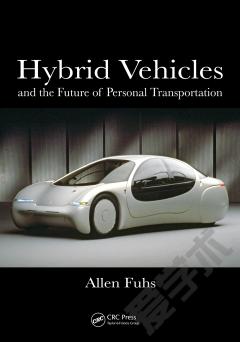
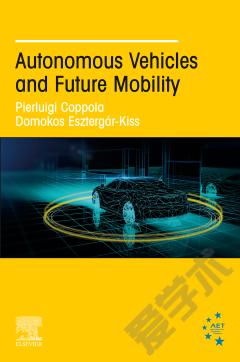
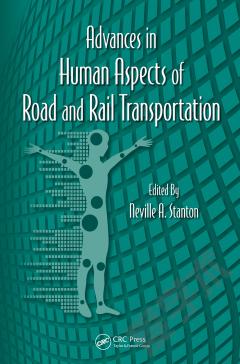
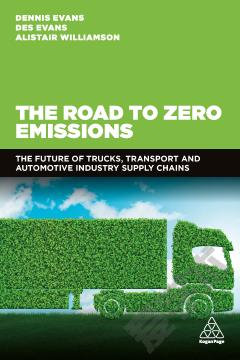

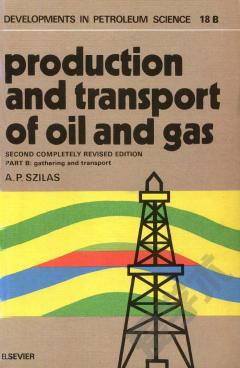


 京公网安备 11010802027623号
京公网安备 11010802027623号